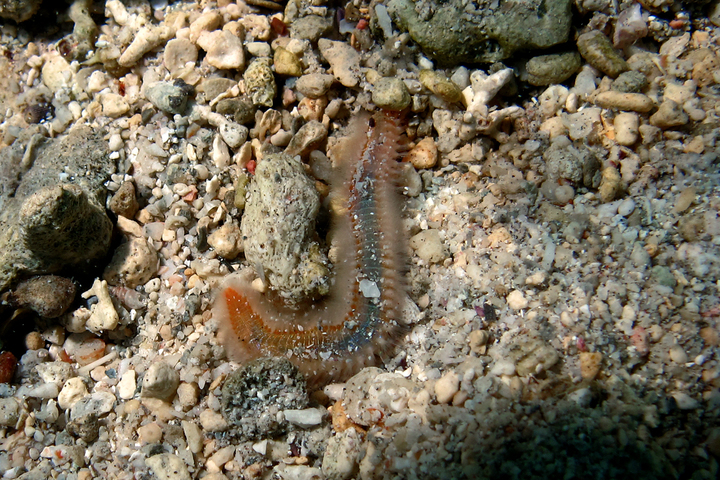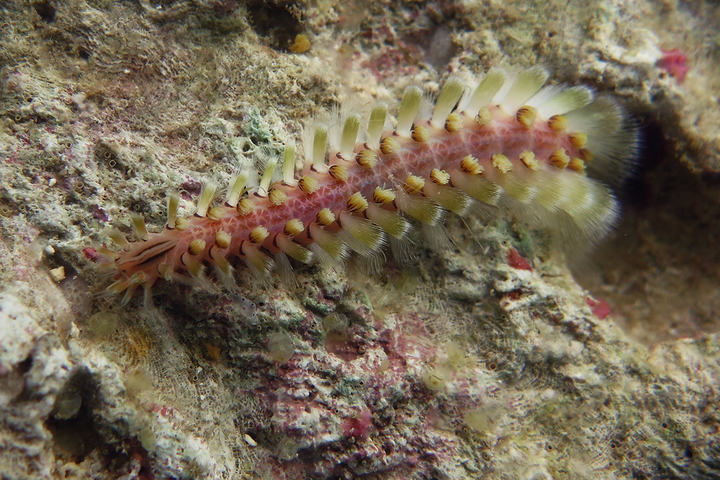Eurythoe spp.


| Latin name | Eurythoe spp. |
|---|---|
| Local name | Aquarium fireworm |
| Family | Amphinomidae - Eurythoe |
| Origin | East Indian Ocean, West Indian Ocean, Australia, The Red Sea, The Mexican Golf, Indonesia, East Pacific, Central/West Pacific |
| Max length | 60 cm (23.6") |
| Minimum volume |
10 l (3 gal) |
|---|---|
| Hardiness |
Hardy |
| Suitable for aquarium |
Suitable for most aquarium |
| Reef safe |
Always reef safe |
| Aggressiveness | Peaceful |
| Recommended |
Detritus |
|---|
This species is venomous, but it´s toxin is rarely dangerous to humans. It can however cause considerable pain.
In case of poisoning it is vital to have as much information as possible regarding the species/poison. Have telephone numbers for the poison hotline close to the aquarium.
Since different people can have different reactions to poisons, take precautions necessary to ensure personal safety and that of the surroundings.
This poison can be dangerous if suffering from allergies.
Bristle worms are found in most aquariums.
The Eurythoe species are the most common species in home aquariums. These should be considered beneficial scavengers.
Be careful not to touch a bristle worm as the bristles can deliver a painful sting.
Always use gloves if you have bristle worms in your aquarium.
Amphinomidae - Wikipedia - (English)
Ronald L. Shimek. 2004. Marine Invertebrates (PocketExpert Guide) - TFH Publications / Microcosm Ltd. - (English)

